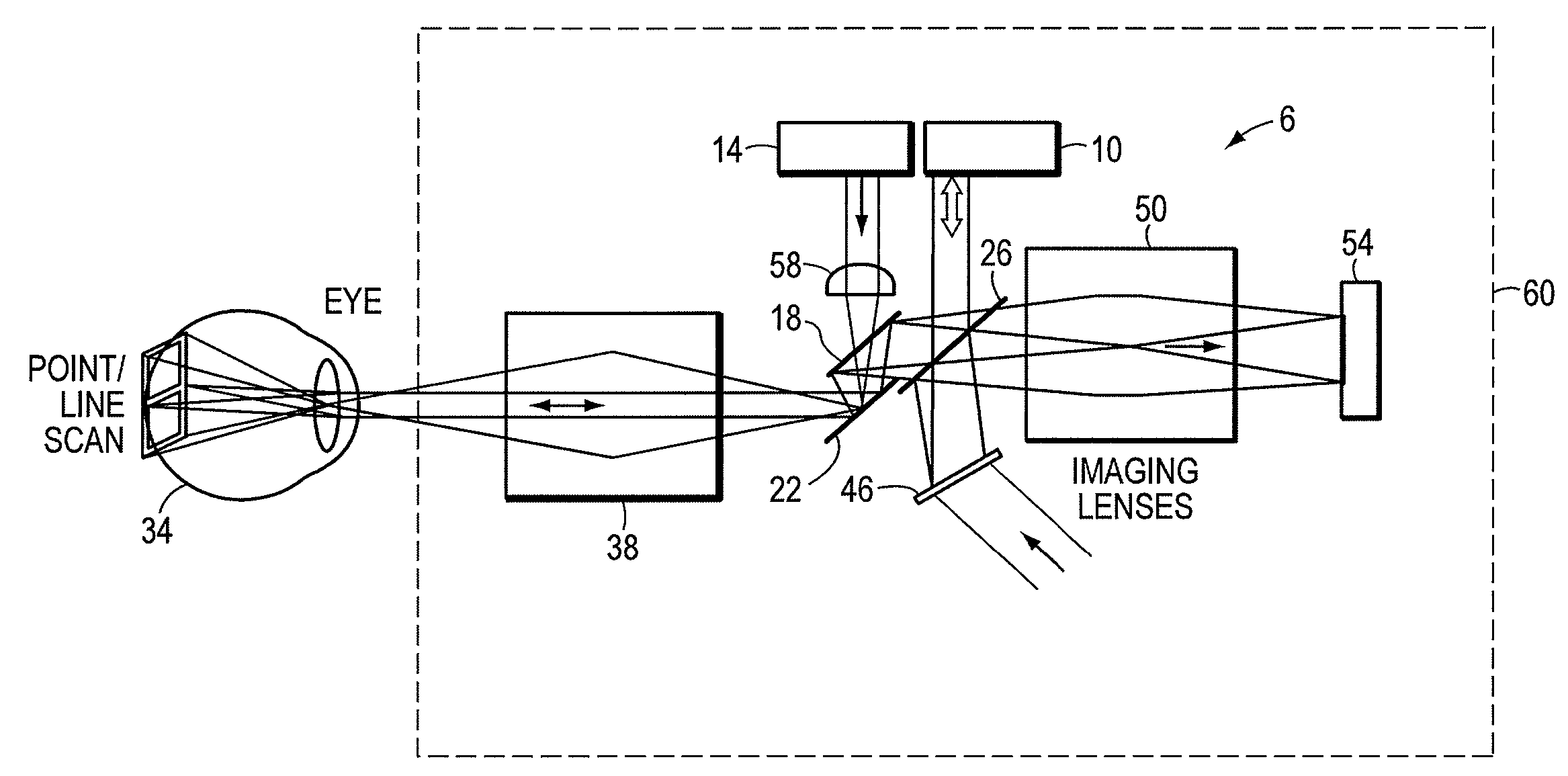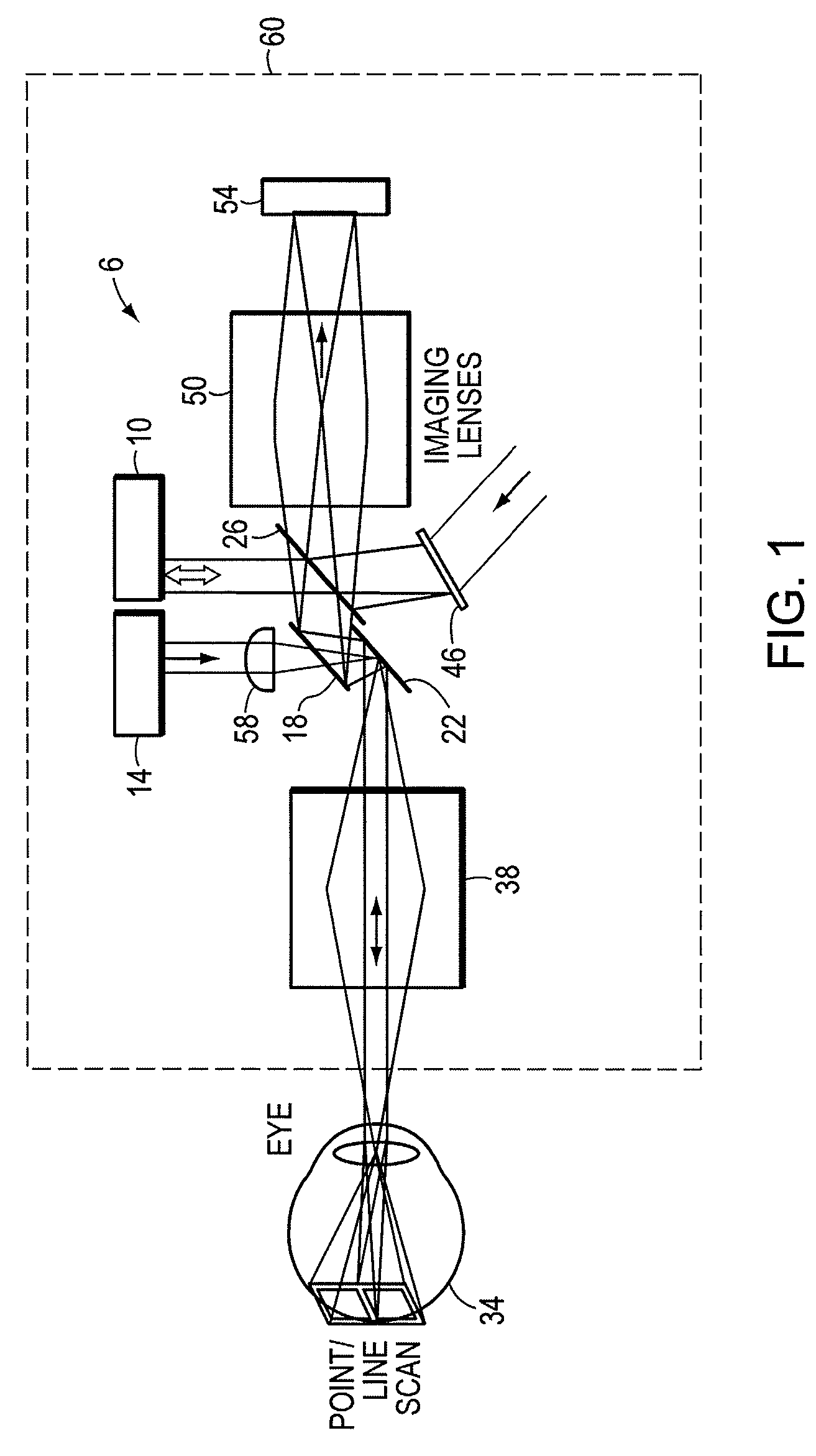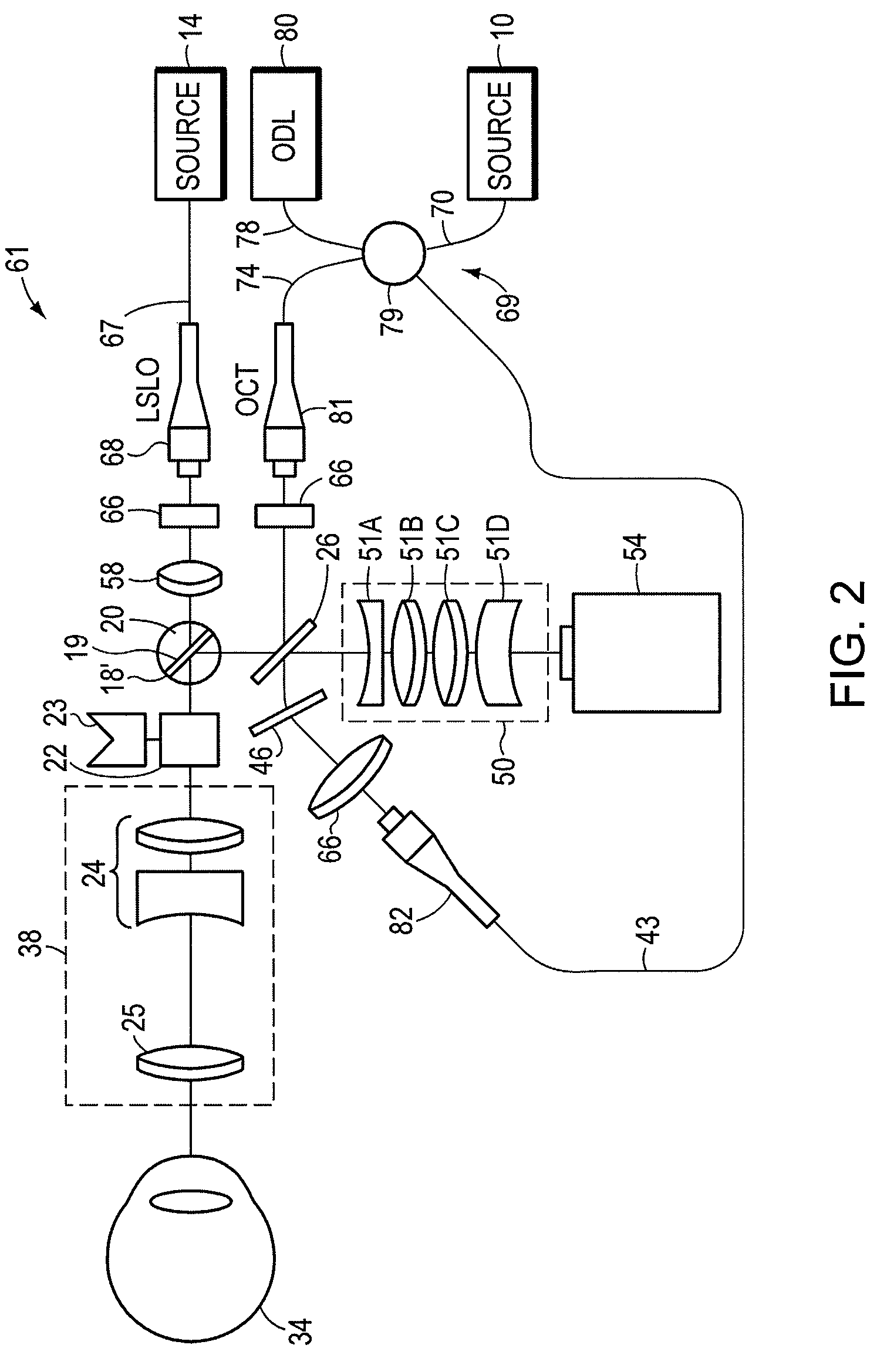Hybrid spectral domain optical coherence tomography line scanning laser ophthalmoscope
a laser ophthalmoscope and optical coherence technology, applied in the field of optical imaging, can solve the problems of limited diagnostic utility of this powerful imaging modality and the inability to accurately assess the transverse eye motion, and achieve the effects of simple, compact instruments, and enhanced diagnostic utility of o
- Summary
- Abstract
- Description
- Claims
- Application Information
AI Technical Summary
Benefits of technology
Problems solved by technology
Method used
Image
Examples
Embodiment Construction
[0033]FIG. 1 shows an embodiment of an imaging apparatus 6 that can provide line scanning laser ophthalmoscope (LSLO) images and Optical Coherence Tomography (OCT) image. The imaging apparatus 6 can be converted between a LSLO mode and a OCT mode without the use of moving parts. Instead, a system of optical elements are implemented to combine the beam paths of the OCT and the LSLO and to scan an eye 34. A first source 10 provides a first beam of light for the OCT mode and a second source 14 provides a second beam of light for the LSLO mode. The imaging system 6 can operate in the LSLO and the OCT mode using optical elements 18, 22, and 26.
[0034]When the imaging apparatus 6 is operating in the OCT mode, the beam of light from the OCT light source 10 travels to a first surface of the optical element 26, which directs the light to a first surface of optical element 18. The line can be redirected to optical element 22, which scans the beam of light along the retina of the eye 34. In som...
PUM
 Login to View More
Login to View More Abstract
Description
Claims
Application Information
 Login to View More
Login to View More - R&D
- Intellectual Property
- Life Sciences
- Materials
- Tech Scout
- Unparalleled Data Quality
- Higher Quality Content
- 60% Fewer Hallucinations
Browse by: Latest US Patents, China's latest patents, Technical Efficacy Thesaurus, Application Domain, Technology Topic, Popular Technical Reports.
© 2025 PatSnap. All rights reserved.Legal|Privacy policy|Modern Slavery Act Transparency Statement|Sitemap|About US| Contact US: help@patsnap.com



